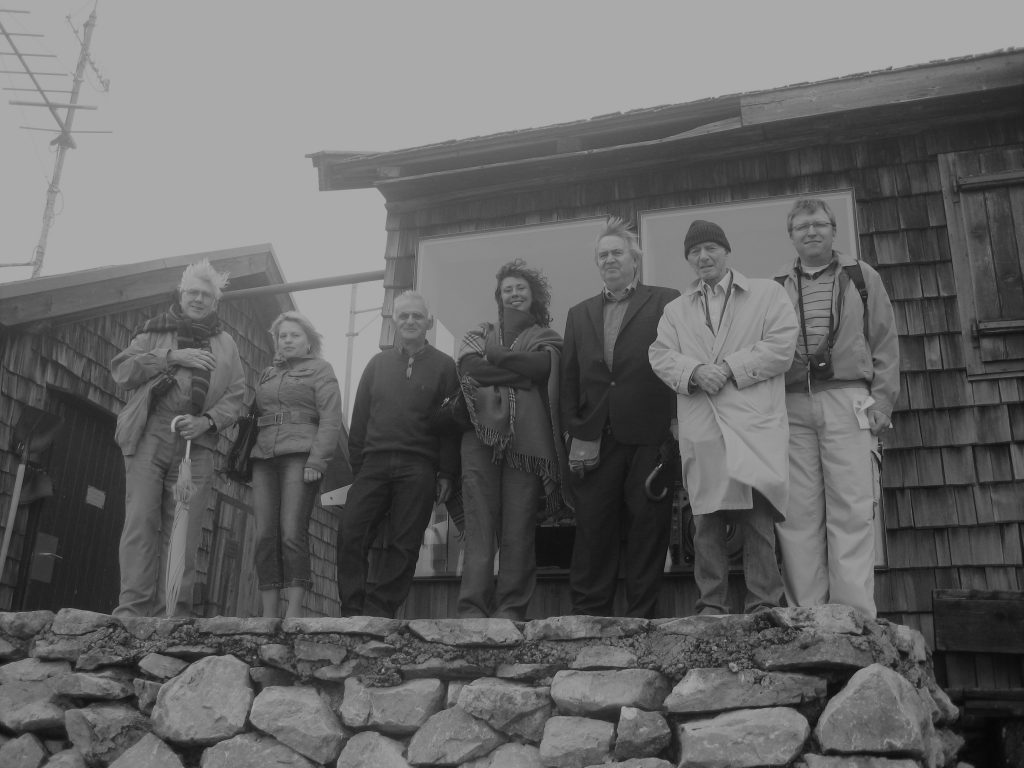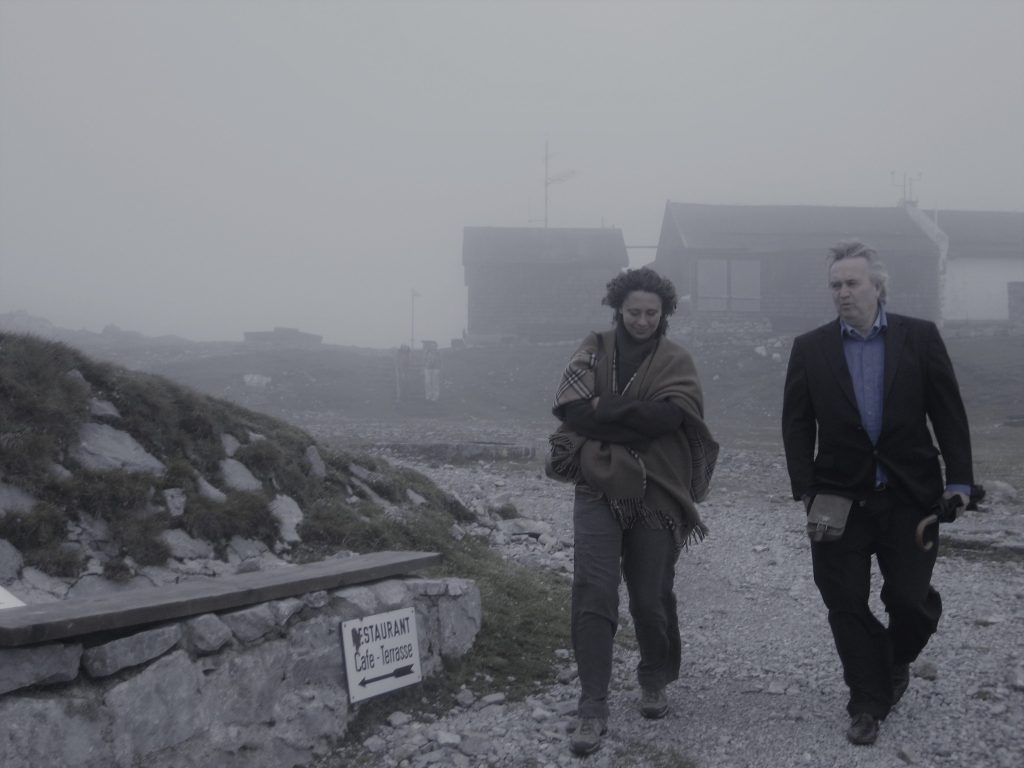memorials
Victor Franz Hess Monitoring Station at Hafelekar/Innsbruck was designated as EPS Historic Site.
In its latest issue of October 6, 2022, the Physik Portal published a report 'Cosmic Construction Hut, about the opening of the Hafelekar Research Site as an EPS Historic Site', which was renovated and transformed into a new attraction by the University of Innsbruck with the support of the City of Innsbruck and the Innsbruck Nordkettenbahnen.

Radiation from space
The video on this page and parts of the text were taken with the kind permission of the University of Innsbruck .
Ein virtueller Rundgang um und durch die Messstation im Hochgebirge ist auf der Seite der Universität Innsbruck erforschbar.
Since the 1930s, the research station has housed the measuring instruments with which its founder Victor Franz Hess, winner of the 1936 Nobel Prize, researched cosmic rays. This place also helped other scientists to make groundbreaking discoveries. In 1937, Marietta Blau and Hertha Wambacher first observed in photo emulsions how a particle of cosmic rays shattered an atomic nucleus.
A neutron monitor and a muon detector were installed in the 1960s and 1970s. The researchers were thus able to measure two secondary particles generated by cosmic rays individually and gained important insights. Rudolf Steinmaurer, research assistant to Victor Franz Hess and later head of the Institute for Experimental Physics at the University of Innsbruck, played a leading role in the permanent registration of cosmic rays.
In 2009, Olaf Reimer's research group at the Institute for Astrophysics began investigating high-energy gamma rays. These arise from the interaction of cosmic radiation with the atmosphere or come from – in some cases still unknown – sources in space. However, current measurement data on the most energetic cosmic particles no longer come from the historically renowned research memorial site Hafelekar, but from the Pierre Auger Observatory (Argentina), the H.E.S.S. telescopes in Namibia and the Fermi space telescope.

Memorial stone in Pieskow/Bad Saarow
Memorial stone in honor of Victor Franz Hess in Pieskow/Bad Saarow, where his decisive balloon flight landed.
The unveiling took place on the occasion of an international commemoration on 6-8. Aug. 2012 in the presence of Arthur Breisky, step-grandson of Victor F. Hess.

Steinke ionization chamber in the Victor F Hess laboratory at Hafelekar
September 2009: Visit to the Victor Franz Hess Laboratory at Hafelekar by some weatherproof members of the Board of the History of Physics (HoP) Group of the European Physical Society (EPS) after attending the History of Physics Session of the first joint annual meeting of the Austrian Physical Society (ÖPG) and the Swiss Physical Society (SPS) in Innsbruck.

Representatives of the European Physical Society visit the Victor Franz Hess Laboratory at Hafelekar
Sofia Talas (Padua), Denis Weaire (Dublin): High altitude wind in front of the Victor F Hess Observatory


George Vlahakis (Athens), Sofia Talas (Padua), Peter M. Schuster (Pöllauberg) on the way to the station at Hafelekar

Dr. Peter Maria Schuster visits the site where Victor F. Hess built the world's first subway laboratory in 1947
On June 6, 2008, Dr. Peter Maria Schuster visits the platform of the 190th Street-Overlook Terrace Station of the 'A' Line in upper Manhattan. Here, at one of the lowest points of the New York Subway system, Victor F. Hess had built a laboratory in 1947 to make rock measurements, adequately shielded from cosmic rays. Dr. Peter Maria Schuster, assisted by engineer and historian Joseph Cunningham, tried to persuade the Metropolitan Transportation Authority management to erect a plaque here commemorating the world's first subway laboratory. Despite supportive letters from Ambassador Dr. Eva Nowotny, Ambassador Dr. Brix and Federal Minister Dr. Hahn, the project has not yet been realized.
Festive opening of the European Centre for the History of Physics echophysics and the Victor Franz Hess Research & Memorial Site on 29.5.2010

Some impressions from the opening of the European Center for Physics History echophysics.


